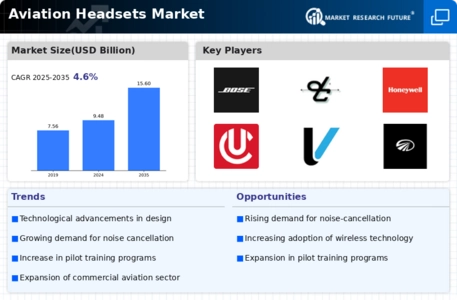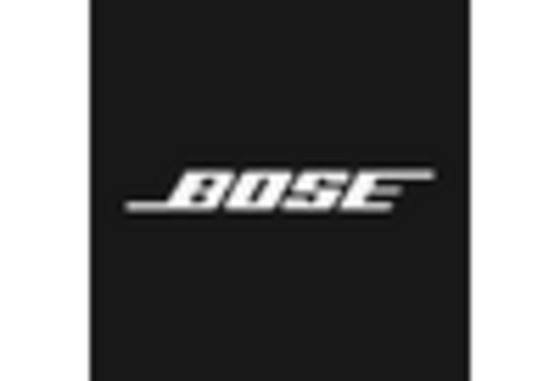Growth in Aviation Sector
The Aviation Headsets Market is poised for growth, largely due to the expansion of the aviation sector. With an increase in air travel demand, airlines are investing in modernizing their fleets, which includes upgrading communication equipment. This trend is reflected in the projected increase in aircraft deliveries, which is expected to reach over 40,000 units in the next decade. As airlines prioritize passenger and crew safety, the need for high-quality aviation headsets becomes paramount. Enhanced communication capabilities provided by these headsets are essential for maintaining operational safety and efficiency, thus driving market growth.
Emergence of Smart Headset Technologies
The Aviation Headsets Market is witnessing the emergence of smart headset technologies that integrate connectivity features such as Bluetooth and voice recognition. These innovations allow pilots and crew members to access critical flight information and communicate seamlessly without manual intervention. The integration of smart technologies is expected to enhance situational awareness and operational efficiency. Market analysts suggest that the adoption of smart headsets could increase by over 25% in the coming years, as aviation professionals seek to leverage technology for improved performance and safety. This trend indicates a shift towards more intelligent and multifunctional aviation headsets.
Rising Awareness of Ergonomics and Comfort
The Aviation Headsets Market is increasingly focusing on ergonomics and comfort, as industry stakeholders recognize the impact of headset design on user experience. Prolonged use of aviation headsets can lead to discomfort and fatigue, which may affect performance. Consequently, manufacturers are investing in research and development to create headsets that offer superior comfort and fit. This trend is supported by data indicating that ergonomic designs can enhance user satisfaction and productivity. As awareness of the importance of comfort in aviation grows, the demand for ergonomically designed headsets is expected to rise, further propelling market growth.
Regulatory Standards and Safety Requirements
The Aviation Headsets Market is significantly influenced by stringent regulatory standards and safety requirements imposed by aviation authorities. Compliance with these regulations ensures that headsets meet specific performance and safety criteria, which is crucial for operational integrity. As regulations evolve, manufacturers are compelled to innovate and enhance their products to meet these standards. This compliance not only fosters consumer trust but also drives market growth, as airlines and operators prioritize headsets that adhere to safety protocols. The ongoing emphasis on safety in aviation is likely to sustain demand for compliant headsets in the foreseeable future.
Increased Demand for Noise-Cancellation Technology
The Aviation Headsets Market experiences a notable surge in demand for advanced noise-cancellation technology. As aviation environments become increasingly noisy, pilots and crew members require headsets that effectively minimize ambient sound. This demand is driven by the need for enhanced communication clarity and reduced fatigue during long flights. According to recent data, the market for noise-cancelling headsets is projected to grow at a compound annual growth rate of approximately 8% over the next five years. This trend indicates a shift towards headsets that not only provide comfort but also integrate sophisticated sound management features, thereby enhancing overall operational efficiency in the aviation sector.

















Leave a Comment